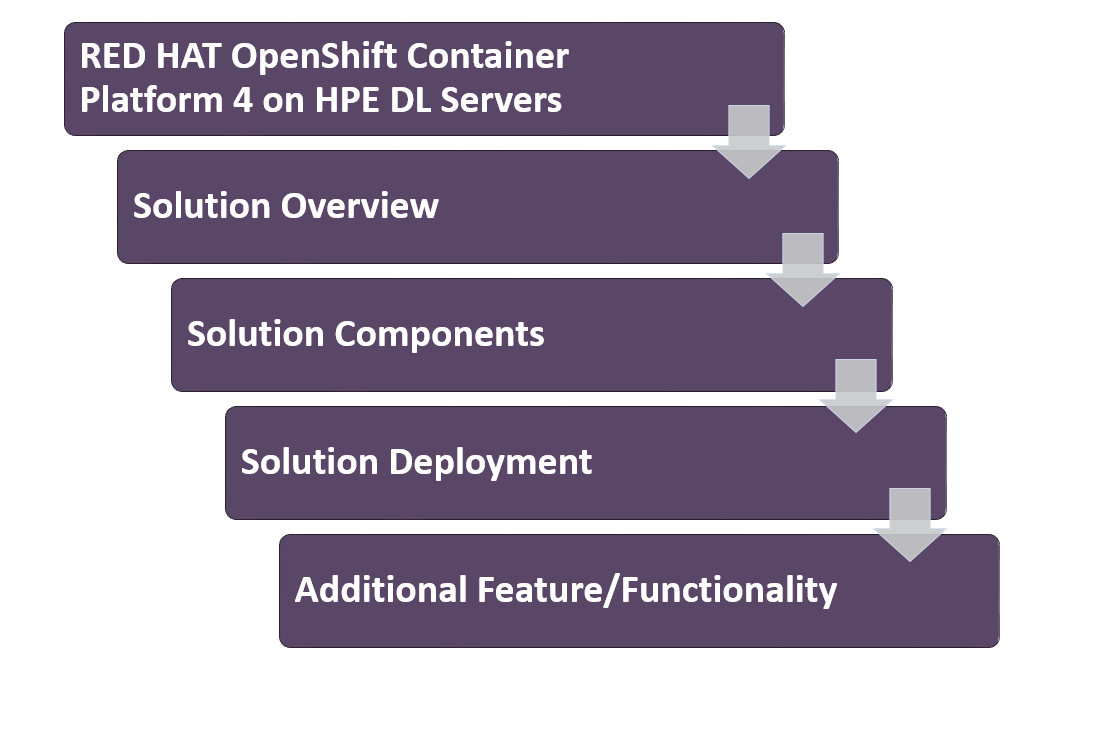# Introduction
This document describes the deployment of a high available and secure Red Hat® OpenShift® Container Platform 4.6 on HPE DL380 and DL360 Gen10 Servers. It is intended to be used in conjunction with Ansible playbooks and python scripts found at https://github.com/HewlettPackard/hpe-solutions-openshift (opens new window). This document was created using OpenShift Container Platform 4.6 and the documents for that version are available at https://docs.openshift.com/container-platform/4.6/welcome/index.html. (opens new window) Hewlett Packard Enterprise strives to make regular updates to this solution with the goal of validating against the latest available version of Red Hat OpenShift Container Platform. As a result, references in the document will generally refer to OpenShift Container Platform 4.6 and will mention specific sub-versions in strategic locations to note the version that was tested.
The Red Hat OpenShift Container Platform 4.6 deployment on DL360 and DL380 Gen 10 servers consists of the following:
Three (3) OpenShift Container Platform master nodes, Three (3) HPE ProLiant DL380 Gen10 servers are used for the worker nodes (out of which one node will be used as the OCP bootstrap node). Later on the bootstrap node will be reconfigured as an additional compute node and storage node.
OpenShift Container Storage (OCS) will be installed on the three worker nodes. Each OCS node is equipped with a single SSD drive to be used as the OCS storage device. Optionally, the customer can configure the OCS in external storage mode. For this purpose, three more HPE ProLiant DL380 Gen10 will be required to form a Red Hat Ceph storage cluster. HPE storage system can be used for the External storage mode.
Persistent volume leverages Red Hat OpenShift Container Storage 4.5 (Internal or External) or HPE Storage systems such as HPE Nimble and HPE 3PAR provide persistent storage for containers and registry as well as data management.
It is recommended this document should be reviewed in its entirety and the installation user should understand all Prerequisites and procedure before installation. It is also recommended that the installation user review the OpenShift Container Platform 4.6 installation process as described by Red Hat.
# Deployment Guide Flow
Below flow diagram shows the high level flow of the Deployment Guide.

NOTE
Hewlett Packard Enterprise plans to update this document over time with enhancements to deployment methodologies as well as new software versions, features, and functions. Check for the latest document at https://hewlettpackard.github.io/hpe-solutions-openshift/ (opens new window).
Due to the ephemeral nature of the containers, protection of persistent data associated with containers is a crucial task. The pods which require persistent data use persistent volume with disks from the HPE Storage system.